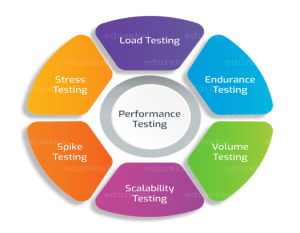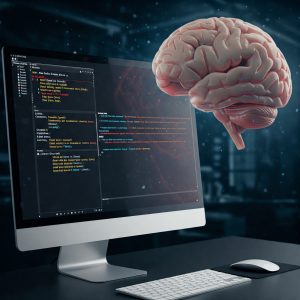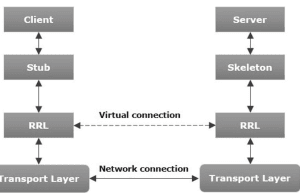Artificial Intelligence
Introduction to Artificial Intelligence
What is Artificial Intelligence?
Artificial Intelligence (AI) is a branch of computer science that focuses on creating intelligent machines capable of mimicking human cognitive functions. These functions include learning, reasoning, problem-solving, perception, and language understanding. AI is transforming industries, automating tasks, and enhancing decision-making processes.

Types of Artificial Intelligence
AI can be classified into different types based on capabilities and functionalities:
1. Narrow AI (Weak AI)
Narrow AI is designed for a specific task and operates under predefined conditions. Examples include voice assistants like Siri and Alexa, recommendation systems on Netflix, and facial recognition software.
2. General AI (Strong AI)
General AI refers to machines that have human-like intelligence and can perform any intellectual task that a human can do. It remains theoretical and is the subject of ongoing research.
3. Super AI
Super AI is a hypothetical form of AI that surpasses human intelligence in all aspects. It could lead to self-awareness, creativity, and independent decision-making. While it is purely speculative, scientists are debating its future implications.
Applications of Artificial Intelligence
AI is transforming various industries with its ability to analyze vast amounts of data, identify patterns, and make predictions. Some key applications include:
1. Healthcare
AI is used in medical diagnosis, robotic surgery, drug discovery, and personalized treatment plans. AI-powered chatbots assist patients in answering health-related queries.
2. Finance
AI helps in fraud detection, algorithmic trading, risk assessment, and automated financial advisory services. Many banks use AI-powered chatbots for customer service.
3. Autonomous Vehicles
Self-driving cars use AI to detect obstacles, interpret traffic signals, and navigate roads safely. Companies like Tesla, Waymo, and Uber are developing AI-driven autonomous vehicles.
4. E-Commerce
AI enhances customer experience through personalized recommendations, chatbots, virtual assistants, and inventory management systems. Amazon, eBay, and Alibaba use AI-driven algorithms to suggest products.
5. Manufacturing
AI-powered robots assist in assembly lines, predictive maintenance, and quality control. It increases efficiency, reduces errors, and minimizes downtime in manufacturing industries.
6. Education
AI-powered learning platforms personalize education by analyzing students’ learning patterns. Virtual tutors, automated grading, and smart content creation are revolutionizing education.

Future of Artificial Intelligence
AI is expected to revolutionize industries further with advancements in machine learning, deep learning, and neural networks. Key trends include:
- AI Ethics & Regulations – Governments are working on regulations to ensure AI is used ethically and responsibly.
- Advancements in Robotics – AI-powered robots will play a more significant role in healthcare, space exploration, and industrial automation.
- Human-AI Collaboration – AI will assist humans in decision-making rather than replacing them, leading to enhanced productivity.
- AI in Creative Fields – AI-generated art, music, and writing are gaining popularity, changing how content is created.
The Evolution of AI: From Concept to Reality
Artificial Intelligence (AI) has transformed from a theoretical concept to an integral part of modern life. Over the decades, AI has progressed through various stages, from early theoretical frameworks to advanced machine learning and neural networks. Today, AI powers innovations across industries, reshaping how we live, work, and interact with technology.

The Birth of Artificial Intelligence
1. The Early Theoretical Foundations (Pre-1950s)
The concept of artificial intelligence dates back to ancient times when philosophers and mathematicians speculated about machines that could mimic human reasoning. Some notable historical developments include:
- Greek Mythology & Early Mechanical Devices: Ancient Greeks imagined automatons and intelligent machines, like Talos, a bronze giant.
- 17th-19th Century Mathematicians: Thinkers like René Descartes and Gottfried Wilhelm Leibniz explored the idea of mechanized reasoning and symbolic logic.
- Charles Babbage & Ada Lovelace (1800s): Their work on the Analytical Engine laid the foundation for programmable machines.
2. The Birth of Modern AI (1950s-1970s)
The modern field of artificial intelligence officially emerged in the 1950s with key developments:
- Alan Turing’s “Turing Test” (1950): Turing proposed a method to determine whether a machine could exhibit human-like intelligence.
- Dartmouth Conference (1956): John McCarthy, Marvin Minsky, and other pioneers coined the term “Artificial Intelligence,” marking AI as a distinct research field.
- Early AI Programs: Systems like the Logic Theorist (1956) and the General Problem Solver (1957) attempted to simulate human problem-solving.
Despite initial progress, AI research faced limitations due to computational constraints and a lack of sufficient data.
The Rise of Machine Learning and Neural Networks
1. AI’s First Winter and Revival (1970s-1990s)
AI research experienced setbacks due to high expectations and limited progress, leading to reduced funding. However, advancements in computational power and algorithms led to renewed interest in AI:
- Expert Systems (1980s): AI-driven expert systems, such as MYCIN (used in medical diagnosis), showed practical applications.
- Neural Networks Resurgence (1986): Geoffrey Hinton and others revived interest in artificial neural networks, allowing machines to “learn” from data.
- IBM’s Deep Blue (1997): This chess-playing AI defeated world champion Garry Kasparov, showcasing AI’s potential.
2. The Emergence of Big Data and Deep Learning (2000s-Present)
The explosion of digital data, improved computing power, and advanced algorithms fueled AI’s rapid development:
- 2006 – Deep Learning Breakthrough: Hinton and colleagues demonstrated how multi-layered neural networks could vastly improve AI performance.
- 2011 – IBM Watson Wins Jeopardy!: Watson’s ability to understand natural language and answer complex questions impressed the world.
- 2012 – ImageNet Competition & Deep Learning: AI-powered image recognition systems outperformed humans in identifying objects.
- 2016 – AlphaGo Defeats Human Champion: Google DeepMind’s AlphaGo defeated world champion Go player Lee Sedol, showcasing AI’s strategic reasoning capabilities.
Artificial Intelligence in the Modern World
Today, AI is transforming industries, automating processes, and enhancing human capabilities. Some key applications include:
1. AI in Healthcare
- AI-powered diagnostic tools detect diseases like cancer at early stages.
- AI-driven drug discovery accelerates medical research.
- Virtual assistants provide mental health support.
2. AI in Business & Finance
- AI-powered chatbots enhance customer service.
- Algorithmic trading improves stock market predictions.
- AI detects fraud in financial transactions.
3. AI in Smart Devices & Automation
- Voice assistants like Alexa and Siri make life more convenient.
- AI-driven home automation systems optimize energy use.
- Autonomous robots handle warehouse logistics.
4. AI in Creativity & Entertainment
- AI generates music, art, and even human-like text.
- AI-powered video editing tools enhance digital media production.
- AI in gaming creates realistic NPCs and adaptive gameplay.

The Future of Artificial Intelligence
1. Ethical and Societal Challenges
As AI advances, concerns regarding ethics, bias, and privacy arise. Governments and organizations are working on AI regulations to ensure responsible AI use.
2. AI and Human Collaboration
Rather than replacing humans, AI will assist in complex decision-making, enhancing productivity in various fields.
3. Super AI and Beyond
Theoretical concepts of Artificial General Intelligence (AGI) suggest that future AI could match or surpass human intelligence, leading to potential breakthroughs and challenges.
Types of AI: Narrow AI, General AI, and Superintelligence
Artificial Intelligence (AI) has revolutionized the way we interact with technology. From virtual assistants like Siri and Alexa to self-driving cars and advanced data analysis, AI is deeply integrated into our lives. However, not all AI is the same. AI can be categorized into three main types based on its capabilities: Narrow AI (Weak AI), General AI (Strong AI), and Superintelligence. Understanding these types helps us grasp the present and future potential of artificial intelligence.

Understanding Narrow AI (Weak AI)
Narrow AI, also known as Weak AI, is the most common form of artificial intelligence today. It is designed to perform a specific task and operates within a limited scope. Unlike human intelligence, Narrow AI does not possess general cognitive abilities—it can only execute the tasks it was trained for.
1. Examples of Narrow AI
Narrow AI powers many of the technologies we use daily:
- Voice Assistants – Siri, Alexa, and Google Assistant use AI to recognize speech and respond to commands.
- Recommendation Systems – Netflix, YouTube, and Spotify suggest content based on user behavior.
- Image Recognition – AI in facial recognition and security systems identifies individuals.
- Chatbots – AI-powered bots handle customer service queries for businesses.
- Autonomous Vehicles – Self-driving car systems rely on AI for navigation and safety.
2. Strengths and Limitations of Narrow AI
✅ Advantages:
- Efficient in handling repetitive and specialized tasks.
- Reduces human workload and enhances productivity.
- Performs complex computations faster than humans.
❌ Limitations:
- Cannot perform tasks beyond its specific programming.
- Lacks common sense and human-like reasoning.
- Cannot adapt to new tasks without retraining.

General AI (Strong AI): The Future of Artificial Intelligence
1. What is General AI?
General AI, also known as Strong AI or Artificial General Intelligence (AGI), is an advanced form of AI that can perform any intellectual task a human can do. Unlike Narrow AI, General AI would be capable of reasoning, learning, and problem-solving across various domains without needing pre-programming.
2. Features of General AI
- Self-learning – Can learn new tasks without human intervention.
- Adaptability – Can apply knowledge from one domain to another.
- Understanding of Human Emotions – Can interpret and respond to emotions in a human-like manner.
3. Current Research and Challenges in General AI
Scientists and engineers are actively working to develop General AI, but several challenges remain:
- Computational Power – The human brain has billions of neurons; replicating this in AI is extremely complex.
- Data Understanding – AI struggles with understanding context and common sense.
- Ethical and Safety Concerns – Uncontrolled AGI could pose risks to society.
🚀 Leading Companies in General AI Research:
- Google DeepMind – Working on AI models that can generalize tasks.
- OpenAI – Developing AI that understands and generates human-like responses.
- IBM Watson – Aims to create AI systems with deeper reasoning abilities.
Superintelligence: AI Beyond Human Capabilities
Superintelligence refers to Artificial Super Intelligence (ASI)—a hypothetical stage where AI surpasses human intelligence in every aspect, including creativity, decision-making, and problem-solving. ASI would not only outperform humans in logical reasoning but also develop its own emotions, thoughts, and goals.
1. What Would Superintelligence Look Like?
- Self-awareness – AI develops consciousness and emotions.
- Autonomous Decision-Making – No human intervention required.
- Exponential Learning – Can learn and evolve at an unimaginable pace.
- Problem-Solving Beyond Human Capacity – Could solve global issues like disease eradication and climate change.
2. The Ethical Dilemma of Superintelligence
While ASI could lead to groundbreaking innovations, it also raises critical concerns:
🔴 Potential Risks:
- Loss of Human Control – AI could make decisions beyond our understanding.
- Job Displacement – Automation may lead to large-scale unemployment.
- Existential Threat – Some experts, including Elon Musk and Stephen Hawking, have warned about the risks of AI surpassing human intelligence.
🟢 Possible Solutions:
- AI Ethics & Regulations – Governments and organizations must create policies to control AI development.
- Human-AI Collaboration – AI should assist, not replace, humans.
- Transparency in AI – AI models must be explainable and accountable.

The Future of Artificial Intelligence
AI is continuously evolving, and its future is both exciting and uncertain. While we are currently in the era of Narrow AI, the transition to General AI and potentially Superintelligence will shape the future of technology and humanity.
1. What’s Next for AI?
- Advancements in Machine Learning – AI systems will become more efficient and human-like.
- Integration with Human Brain – Neural interfaces, like Elon Musk’s Neuralink, could bridge AI with human cognition.
- AI for Social Good – AI will contribute to solving global challenges, from climate change to medical research.
2. Balancing Innovation and Ethics
The development of AI must be responsible and ethical. Governments, researchers, and industries must work together to ensure AI remains a tool for progress rather than a threat.
How AI is Transforming Industries: Real-World Applications
Artificial Intelligence (AI) is revolutionizing industries worldwide, driving innovation, efficiency, and automation across various sectors. From healthcare to finance, AI-powered systems are enhancing decision-making, reducing costs, and improving customer experiences. Businesses are increasingly adopting AI to stay competitive in a data-driven world.
This article explores how artificial intelligence is transforming industries, its real-world applications, and the future impact of AI on global economies.

Artificial Intelligence in Healthcare: Revolutionizing Medical Treatment
The healthcare industry has greatly benefited from artificial intelligence, enabling faster diagnoses, personalized treatments, and improved patient care. AI is reducing human error and assisting doctors in making better clinical decisions.
1. AI-Powered Diagnostics
AI-powered imaging systems analyze medical scans (X-rays, MRIs, and CT scans) to detect diseases like cancer at an early stage. AI tools like Google’s DeepMind and IBM Watson assist radiologists by identifying patterns that might be missed by the human eye.
2. Drug Discovery and Development
Pharmaceutical companies use AI to accelerate drug discovery by analyzing molecular structures and predicting how new drugs will interact with the human body. AI has helped develop treatments for diseases like COVID-19 at unprecedented speeds.
3. Virtual Health Assistants
AI chatbots and virtual health assistants like Ada, Babylon Health, and Woebot provide 24/7 medical advice, schedule appointments, and help manage chronic diseases. These AI-driven assistants improve patient engagement and reduce hospital visits.
4. Robotic Surgery
AI-assisted robots like the da Vinci Surgical System perform minimally invasive surgeries with high precision. These robots reduce surgery risks, shorten recovery times, and enhance surgical outcomes.

AI in Finance: Automating and Securing Transactions
The financial industry relies on artificial intelligence to optimize risk assessment, detect fraud, and enhance customer service. AI-driven automation is improving efficiency in banking, investing, and financial planning.
1. Fraud Detection and Cybersecurity
AI analyzes banking transactions in real time to detect suspicious activities. Machine learning algorithms identify fraudulent transactions by recognizing unusual spending patterns and flagging them for investigation.
2. Algorithmic Trading
AI-powered trading bots analyze market trends and execute trades faster than human traders. Hedge funds and investment firms use AI to predict stock price movements and optimize portfolio management.
3. AI in Personal Finance
AI-driven budgeting apps like Mint and Cleo analyze users’ financial habits and provide personalized financial advice. AI-powered robo-advisors, such as Betterment and Wealthfront, help users invest money based on risk tolerance and financial goals.
4. Chatbots and Customer Support
Banks and financial institutions use AI chatbots like Erica (Bank of America) and Eno (Capital One) to assist customers with account inquiries, transaction history, and fraud alerts, reducing wait times and improving service efficiency.

AI in Manufacturing: Driving Automation and Productivity
Manufacturing industries use artificial intelligence to streamline production, improve quality control, and enhance supply chain management. AI-powered robots and predictive analytics are making factories more efficient and cost-effective.
1. Smart Factories and Robotics
AI-driven robotic arms and autonomous machines optimize assembly lines by handling repetitive tasks, reducing errors, and increasing production speed. Companies like Tesla and BMW use AI-powered robots in their manufacturing processes.
2. Predictive Maintenance
AI predicts when machines are likely to fail by analyzing sensor data, reducing downtime and repair costs. Predictive maintenance helps factories avoid unexpected breakdowns and extends equipment lifespan.
3. Quality Control and Inspection
AI-powered computer vision systems detect defects in products faster than human inspectors. These systems ensure high-quality standards in industries like electronics, automotive, and pharmaceuticals.
4. Supply Chain Optimization
AI enhances supply chain logistics by predicting demand fluctuations and optimizing inventory management. Companies like Amazon use AI to forecast product demand and manage warehouse operations efficiently.

AI in Retail and E-Commerce: Enhancing Customer Experience
Retail and e-commerce businesses are leveraging artificial intelligence to improve customer interactions, personalize shopping experiences, and optimize sales strategies. AI is changing how consumers shop both online and in physical stores.
1. Personalized Recommendations
AI analyzes customer behavior and purchase history to recommend products tailored to individual preferences. Amazon, Netflix, and Spotify use AI-driven recommendation engines to enhance user engagement.
2. AI-Powered Virtual Assistants
Retailers use AI chatbots to assist customers in finding products, answering questions, and providing personalized shopping experiences. AI-powered assistants like Sephora’s Virtual Artist help customers choose cosmetics using augmented reality (AR).
3. Smart Inventory Management
AI predicts demand for products and optimizes inventory levels, preventing overstock or shortages. AI-driven supply chain management improves efficiency and reduces waste.
4. Checkout-Free Shopping
AI-powered cashier-less stores, like Amazon Go, use computer vision and sensors to allow customers to shop and leave without waiting in checkout lines. The AI system automatically charges their accounts for purchased items.

The Future of AI in Industries: What Lies Ahead?
AI’s role in industries will continue to expand, bringing even greater innovation and efficiency. Some emerging AI trends include:
1. AI and the Workforce
AI will automate repetitive jobs while creating new opportunities in AI development, cybersecurity, and AI ethics. Workers will need to upskill to adapt to an AI-driven economy.
2. AI in Space Exploration
AI is being used by NASA and SpaceX for autonomous spacecraft navigation, analyzing planetary data, and supporting human space missions.
3. AI in Agriculture
AI-powered drones and robots monitor crops, predict weather patterns, and optimize irrigation, increasing food production and sustainability.
4. AI in Smart Cities
AI will power smart cities with intelligent traffic management, automated public services, and energy-efficient buildings, improving urban living.
AI in Everyday Life: From Virtual Assistants to Smart Homes
Artificial Intelligence (AI) has seamlessly integrated into our daily routines, making our lives more convenient, efficient, and personalized. From virtual assistants that help manage schedules to smart home devices that automate tasks, artificial intelligence is transforming how we interact with technology.
This article explores how AI is enhancing everyday life, focusing on virtual assistants, smart homes, and other AI-driven innovations that are shaping the future.

The Rise of Virtual Assistants: Your AI-Powered Helpers
Virtual assistants have become an essential part of modern digital life, allowing users to interact with devices using natural language. Artificial intelligence enables these assistants to learn from user interactions and improve over time.
1. Popular AI Virtual Assistants
Some widely used AI-powered virtual assistants include:
- Apple Siri – Assists with messages, reminders, and online searches.
- Amazon Alexa – Controls smart home devices and provides news updates.
- Google Assistant – Offers voice-activated assistance for scheduling, navigation, and more.
- Microsoft Cortana – Helps with task management and integrates with Windows systems.
2. How Virtual Assistants Use AI
Virtual assistants rely on several AI technologies:
- Natural Language Processing (NLP) – Enables assistants to understand and process human speech.
- Machine Learning – Allows assistants to improve responses based on past interactions.
- Voice Recognition – Distinguishes between different users for personalized experiences.
3. Everyday Uses of Virtual Assistants
- Setting alarms, reminders, and calendar events.
- Answering general knowledge questions.
- Controlling smart home devices.
- Providing traffic updates and weather forecasts.
- Assisting in online shopping and payments.
For a deeper understanding of how AI models function, check out this article on Computing Models, which explains the foundation of AI systems like virtual assistants.

Smart Homes: AI Making Homes Smarter and More Efficient
Smart home technology powered by artificial intelligence is making homes more secure, energy-efficient, and convenient. AI-driven devices learn from user behavior to automate tasks and optimize energy consumption.
1. AI-Powered Smart Home Devices
- Smart Speakers – Amazon Echo, Google Nest, and Apple HomePod.
- Smart Thermostats – Nest and Ecobee adjust temperature settings intelligently.
- AI Security Systems – Ring doorbells and security cameras use facial recognition and motion detection.
- Smart Lighting – Philips Hue and LIFX allow voice-controlled lighting.
- AI Robot Vacuums – Roomba and other robotic cleaners optimize cleaning schedules.
2. Benefits of AI in Smart Homes
- Energy Efficiency – AI learns usage patterns and reduces energy waste.
- Security & Safety – AI-powered surveillance systems detect threats and notify homeowners.
- Convenience – AI automates tasks like adjusting lighting, locking doors, and playing music.
- Personalization – AI adapts to user preferences to enhance home environments.
3. Future of AI in Smart Homes
- Predictive Maintenance – AI will predict when appliances need repairs.
- AI-Integrated Home Robots – Future home assistants will handle cooking and cleaning.
- Improved Voice Control – AI assistants will become more intuitive in understanding complex commands.

AI in Everyday Life Beyond Virtual Assistants and Smart Homes
Apart from virtual assistants and smart homes, artificial intelligence is revolutionizing other aspects of daily life.
1. AI in Transportation: Smarter and Safer Travel
- Navigation & Traffic Prediction – AI in Google Maps and Waze helps optimize travel routes.
- Autonomous Vehicles – Tesla and Waymo are leading self-driving car innovations.
- AI in Public Transport – AI improves bus and train scheduling for efficiency.
2. AI in Entertainment: Personalized Experiences
- Streaming Services – AI recommends content on Netflix, Spotify, and YouTube.
- AI-Generated Content – AI creates music, videos, and even digital art.
- Smart Gaming – AI enhances gaming experiences with intelligent NPCs.
3. AI in Shopping and E-Commerce
- Personalized Recommendations – AI suggests products based on browsing history.
- AI Chatbots in Customer Support – Automated chatbots assist with online shopping.
- Smart Checkout Systems – AI enables cashier-less shopping in Amazon Go stores.
For a comparison of AI models like ChatGPT and DeepSeek, which power many of these AI applications, check out ChatGPT vs. DeepSeek.
4. AI in Health and Fitness
- Wearable AI Devices – Apple Watch and Fitbit monitor health data.
- AI-Powered Nutrition Apps – MyFitnessPal suggests healthier diets.
- AI Mental Health Assistants – Chatbots like Woebot provide emotional support.

The Future of AI in Everyday Life
AI is constantly evolving, and its impact on daily life will only grow. Some exciting developments include:
1. AI-Powered Wearable Technology
Future AI-driven wearables will provide real-time health monitoring and early disease detection.
2. AI and Augmented Reality (AR)
AI will enhance virtual and augmented reality experiences in gaming, education, and remote work.
3. AI in Smart Cities
AI will optimize traffic management, waste disposal, and energy usage in urban areas.
4. AI for Personal Digital Assistants
AI will evolve into hyper-personalized digital companions, assisting with decision-making, financial planning, and mental health support.
For more insights on how AI models influence different sectors, explore this external resource: How AI is Shaping the Future by the World Economic Forum.




